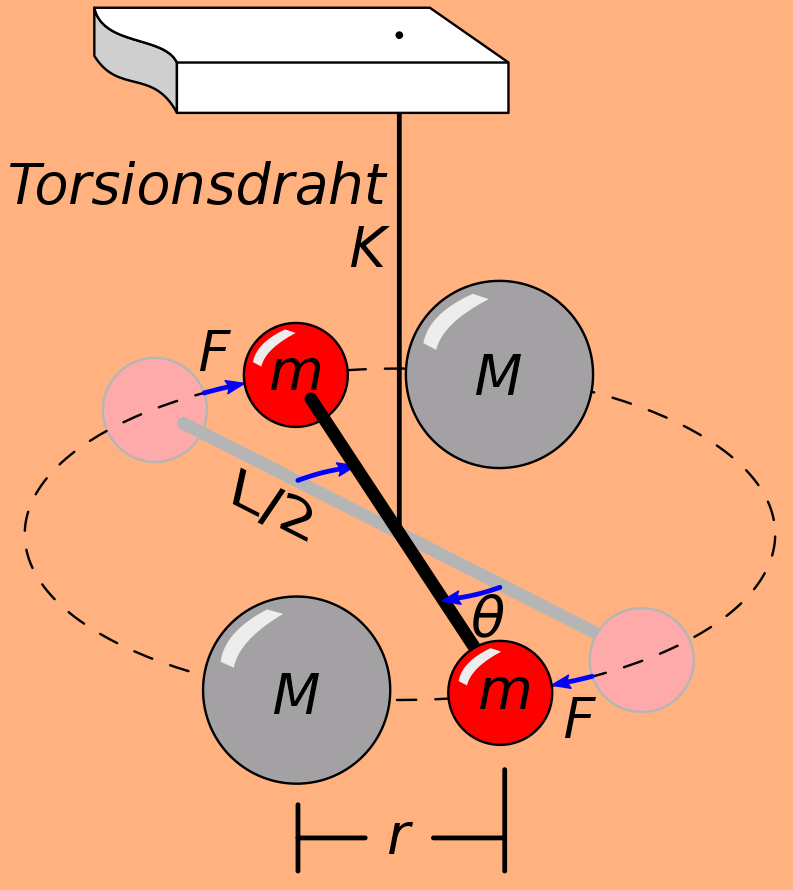Gravitationswaage
Bildinfo und Lizenz
Bildinfo
- Eine Gravitationswaage, hier als Torsionswaage: die grauen und die roten Massen ziehen sich an und verdrehen damit den Draht.
- Originalbeschriftung: Diagram of torsion balance used in the Cavendish experiment performed by Henry Cavendish in 1798. It measured the force of gravity between masses M and m, yielding the value of the gravitational constant G. Labels: (M) mass of stationary lead balls, (m) mass of movable lead balls, (F) gravitational force between each pair of balls, ( θ {displaystyle theta } theta ) angle of deflection of balance from equilibrium position, ( κ {displaystyle kappa } {displaystyle kappa }) torsion spring coefficient, (r) distance between centers of balls when balance is deflected (L) length of balance beam between centers of small balls. See Cavendish experiment, Harvard Lecture Demonstrations, Harvard University.
- Original image: Chris Burks (Chetvorno), translated by Klaus-Dieter Keller, Germany.
Source
- Created: April 17th, 2008
- Author: Chris Burks
License
Public Domain: I (Chris Burks), the copyright holder of this work, release this work into the public domain. This applies worldwide. In some countries this may not be legally possible; if so: I grant anyone the right to use this work for any purpose, without any conditions, unless such conditions are required by law.
Warranty
- No guarantee can be given as to the correctness of facts implied or explicitly stated.
- Usage is completey at your own risk. 💣
Originalseite
- Das Bild ist Teil eines online-Lexikons.
- Rhetos Lernlexikon Mathematik, Aachen:
- Siehe unter => Gravitationswaage => lex
 Eine Gravitationswaage, hier als Torsionswaage: die grauen und die roten Massen ziehen sich an und verdrehen damit den Draht.
© Chris Burks => Zurück zum Artikel
Eine Gravitationswaage, hier als Torsionswaage: die grauen und die roten Massen ziehen sich an und verdrehen damit den Draht.
© Chris Burks => Zurück zum Artikel
